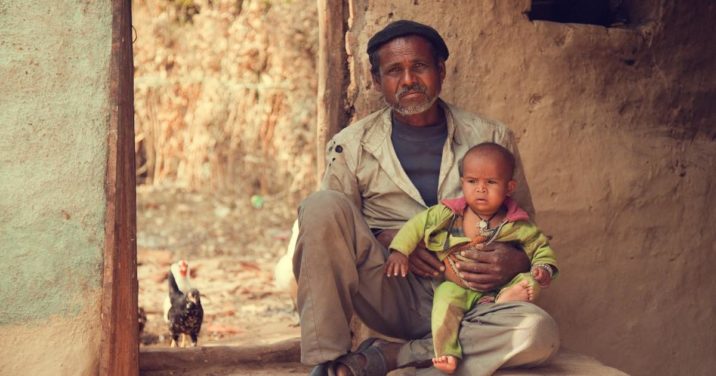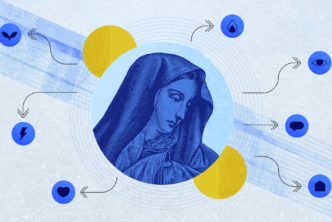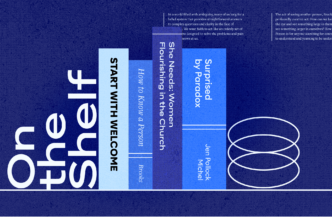By Terry Dalrymple
While governments around the world are focused on poverty alleviation, the church is uniquely called to it. We hear Jesus saying, “Whatever you do to the least of these brothers and sisters of mine, you do to me” (Matthew 25:40). Jesus feels their struggle and calls us to respond to their pain. He is not pointing at the poor and saying “Go” but standing as one of them and calling us to “Come.” He is sending us to remote and marginalized places in anticipation of the day when a great crowd from every tribe, tongue, and nation will gather around his throne.
There are 1.3 billion people in 109 countries living in acute multidimensional poverty, many with no gospel witness among them. They have very little income, and often lack access to safe drinking water, adequate sanitation facilities, sufficient food supplies, economic opportunity, or schools for their children. This is the situation in approximately a million villages around the world—85% of them in South Asia and Sub-Saharan Africa.
The task before us is enormous. Can it be done? I believe that it can.
I serve as founder and coordinator of the Global CHE Network, an alliance of Christian ministries using a single strategy for Christ-centered development (community health evangelism) in 136 countries. In poor communities around the world, disciples are multiplying, churches are being planted, poverty is being alleviated, communities are being transformed, and movements are being ignited that are multiplying change from home to home, village to village, and country to country.
Below I’ll share three main pillars of our strategy for catalyzing Christ-centered transformational movements: model villages, clusters, and tipping points.
For a deep exploration of the principles and strategies that build transformational movements, take a look at my new book Beyond Poverty: Multiplying Sustainable Community Development.
The key to igniting transformational movements is a model village. Model villages are rural poor communities that have lifted themselves out of cycles of poverty and disease. In these villages:
-
- A church is planted in the heart of the community.
- Infants are no longer dying from preventable causes.
- Clean drinking water is available.
- Food supplies are secure.
- Children are being educated.
- Incomes are rising.
- People are united in love.
- Residents are working together for the common good.
Model villages serve as a catalyst to movements, attracting the attention of villages around and inviting them to work together to transform their communities to be like the model.
Corbett and Fikkert in When Helping Hurts (2009) and Helping without Hurting (2015) popularized some foundational concepts for creating a model village, and I highly recommend both. These books call those serving the poor to understand the complexities of poverty and to employ strategies that do no harm, respect every person’s dignity, and empower the materially poor.
Below you’ll see an acrostic that builds on that foundation to help development workers recall the five key characteristics of transformational movements. Let’s begin with this question:
Can you CLAIM that your work among the poor has the potential to launch a movement?
Transformational movements are . . .
Championed by nationals
Champions are local people with a vision of a better future and a deep love for their own people. They are not motivated by pay and cannot be stopped. National movements are led by nationals.
Locally owned
The people of the community assess their own needs, choose their own priorities, plan and resource their own development process.
Asset-based
Communities create solutions using resources that are locally available, avoiding dependencies on the outside.
Integrated
Solutions address the root causes of problems, often complex and multidimensional. Development processes work across the disciplines rather than within them. They address a multiplicity of issues that restrain the poor, including social relationships, educational opportunity, beliefs and values, food security, economic development, and access to healthcare.
Multiplying
Concepts, processes, and outcomes are transferable. Change is spreading from home to home and community to community.
Clusters
The next step in the development of a movement occurs when villages around the model imitate what has happened in the model. This does not always happen spontaneously—villagers in the model need to be trained and equipped to guide the surrounding communities.
We call this the cluster effect because one village is influencing a cluster of villages around it. When villages in the cluster began to multiply into more clusters, a movement is born. And movements spark change not just in the moment, but over time.
Tipping points
Malcolm Gladwell popularized this concept in a great book titled The Tipping Point. Gladwell defines the tipping point as “that magic moment when an idea, trend, or social behavior crosses a threshold, tips, and spreads like wildfire.” Scholars disagree as to the exact percentage but agree that a tipping point is reached when somewhere between 10% and 25% of a population are strongly advocating for change. I believe that if we can put a model view of every community in a district, province, or country, we will reach a tipping point. We will have started a movement with the potential of powering itself.
Launching these types of movements around the globe puts transformation in a million villages within reach—if we’re willing to make the required significant changes to our ministry paradigms.
***
For more than three decades, Terry Dalrymple has sought to bring evangelism and compassion together in ways that multiply disciples, plant churches, and lift communities out of cycles of poverty and disease. He founded Global CHE Network and also teaches poverty alleviation at the Geneva Institute for Leadership and Public Policy and serves as catalyst for poverty alleviation with Transform World 2033.
Get Terry’s book Beyond Poverty at logos.com and read it with Logos’ free Bible study app—where every Bible reference pops up with a click or tap, you can create a reading plan for any of your books, and much more.
If you’re interested in exploring possibilities for engagement with the million village movement, you may want to visit Terry’s website for church and ministry leaders, which provides resources for online learning and pathways to engagement.






